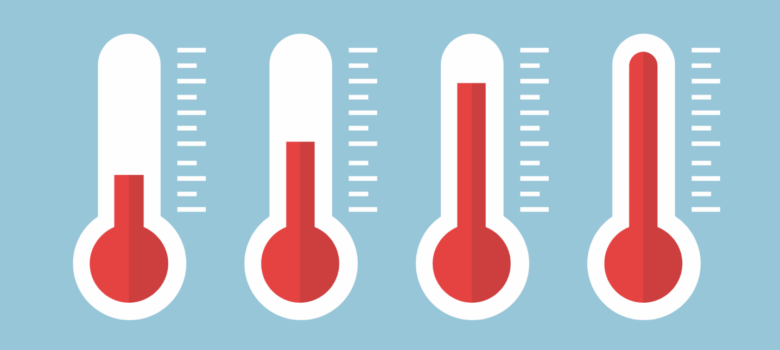
Some people like to heat their homes to Sahara-like temperatures, while others prefer a more arctic feel, however the majority of us sit somewhere in between. The whole ‘how hot should my house be’ topic is a bit of a contentious issue, so I will take you through some of the key points and try to give you a better idea of the temperature that might be right for your home.
What does the government say about temperature?
A recent government study found that in the UK, the average temperature of a home is 17.7°C, whilst the recommended level is 21°C (70°F). This discrepancy in temperatures has been used to show how fuel poverty was preventing people from heating their homes to a comfortable temperature – it is estimated that 2.5m people are currently living in fuel poverty.
This is really oversimplified though, because some people will need higher temperatures – like the elderly or ill – whilst the average person can get away with having the temperature much lower. It is a little odd for the government to recommend this relatively high temperature when it is trying to reduce energy consumption.
To be honest, the majority of people can live very comfortably at a temperature well below 21°C, so don’t just set the thermostat at this temperature out of habit!
Using a thermostat to set temperature
Many people use a thermostat to set their temperature, but you need to make sure it is set up correctly. A thermostat works by recording the ambient air temperature around it. If the temperature of the air is lower than the thermostat, it will send a message to the boiler to fire up, while if the temperature of the air is higher, it will tell the heating system to switch off.
Therefore, a thermostat positioned right by your draughty front door is going to kick in at a lower temperature than one in your living room. In this case, even though you are setting your thermostat to 21°C by the door, the temperature in the living room might be getting up to 24°C.
As a result, it is really important to know your house and how warm you need it, rather than just setting it at a certain level and forgetting about it. You can negate this by using a wireless thermostat that you can place where you like.
>>> The Most Efficient Way to Use Central Heating <<<
Insulation is just as important as your thermostat
It’s no good setting your thermostat to save energy if you are inefficient to begin with. You can set your thermostat down at 16°C or 17°C to save money, but if you have no insulation and an old inefficient boiler, you are still going to be spending a fortune, since whatever heat you pump into the home to warm it up, will quickly escape through the walls. If you set the thermostat to 25°C in a poorly insulated house, it might not even get that warm, because the rate of heat loss will be just too high. So increasing the amount of insulation in the loft, on the walls and under the floor is key to being able to heat your home effectively. Don’t forget your windows either; even if double glazing seems too expensive, secondary glazing like Ecoease could be the perfect way to reduce heat loss.
Every degree costs you money
Every house will vary, but the generally accepted rule is that for every degree you increase your thermostat, you will be paying an extra £60 a year. This is because your boiler needs to work harder to get the temperature up – if you have electric heating the savings could be even higher.
For larger or more inefficient homes, this can be much higher. So bear that in mind when you go to turn up your heating. If you need to be warmer, put on a jumper, or you could try supplementary heating like an infrared heating panel. This boosts the temperature in a room with instant heat, without having to turn up your thermostat for the whole house.
You shouldn’t be wearing shorts in the winter
It is a bit obvious, but you can keep your thermostat down if you wear warmer clothes. A recent study found that some people set their thermostat to 30°C, whilst many were setting it above 25°C. In a poorly insulated home, this would mean that the heating would just stay on all day, because that temperature will probably never be reached. These people would save hundreds of pounds a year by setting their thermostat to 21°C or below and wearing some thicker clothes.
Different rooms need different temperatures
Using only a thermostat means that you could be overheating other rooms in your home. Heating controls are really important. If you have them, use them. If you don’t have them, get them.
Thermostatic radiator valves (TRVs) let you control the temperature of each room individually. For example, a bedroom can be comfortable at 16°C (as you’ll be under the covers), whereas a living room might need to be warmer. Traditional TRV’s are simple, usually using a dial between 1-5 to set the rate, and you can pick them up for as little as £12.50, but there are also more high spec options. If you want full control of your heating system then smartphone enabled systems will give you the ability to zone out your house and only use the energy you need. This starter pack from tado provides everything you need to get set up with.
Don’t heat your home when you’re not there
It seems simple, but lots of people set their thermostat to 21°C and leave it there, even when they are out at work. Make sure you use your programmer as well, and if you want to control each room while you are out, you can get yourself a remotely controllable tool like a Nest. These gadgets let you control each room’s temperature remotely, even when you are out of the house.
Temperatures have been increasing for years
The average temperature of homes has increased over the decades. Ever since the advent of central heating, people feel like they should be able to walk around their home in a T-shirt in winter, whereas years ago people would wrap up even in their living room. Whilst there are certain situations where the heating needs to be up high (for instance when there is an elderly or unwell person in a room), you can usually wear a jumper and turn the thermostat down. Do we really need to have the heating up 4 degrees warmer than our parents had it a few decades back?
Can there ever be a perfect temperature that you should heat your home to?
The best answer as far as we are concerned is – the lowest comfortable temperature. Some people will happily turn down their heating in the bedroom but don’t want to wrap up in their living room, while others will put on jumpers and use an extra high tog duvet. At the end of the day, it’s your money – so decide for yourself what you are comfortable with, but don’t set the thermostat to 21°C simply out of habit!
Installing a new heating system
Are you thinking about installing a new heating system in your home?
If you would like us to find you a local installer, just fill in the form below and we will be in touch shortly!
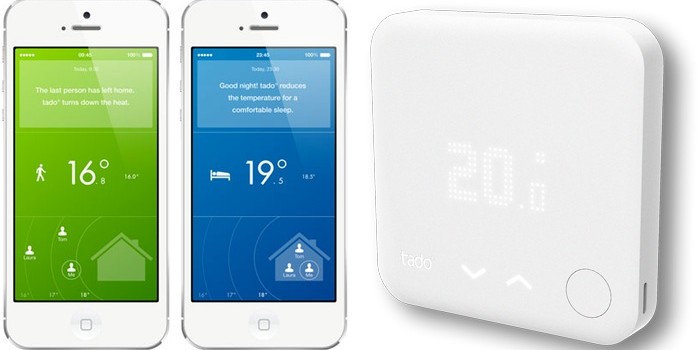



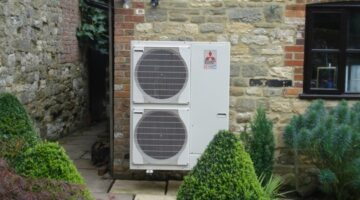

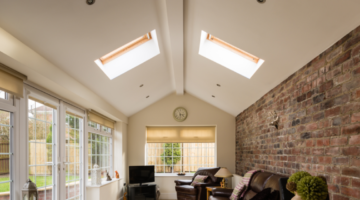
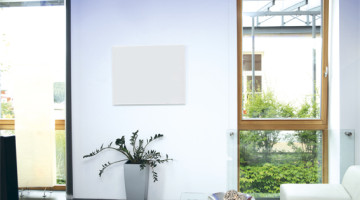





I notice you haven’t dared to enter the Mr vs Mrs aspect of heating homes….my husband and I have different internal thermostats as far as I can tell. He will regularly edge the temp towards 15degrees! I’m more comfortable at 18/19 degrees.
However I have noticed from reading your article that our thermostat is located in the hallway next to the front door- suggesting we actually have no idean what our true temp is running at!
Hi Lizzie, we have been in a client’s house when British Gas were installing a boiler + heating controls and they tried to position it next to the front door too. This is the worst place for a thermostat, since it will normally encounter cold draughts when the door opens which in turn will make the boiler fire up. Ideally you want to put it in the lounge, away from draughts to give a more stable heating experience!
I think the Mr & Mrs thing we will leave to be honest, although worth mentioning since my girlfriend moved into my house I have noticed the gas bill is creeping up – no idea why!!
Seems British gas do like the front door position as that’s where mine is; to compensate I’ve set it at 17 degrees and we wear jumpers/cardi’s – sorry not sure why caps lock seems to be stuck on for this post!! to
Hi Nicky, yep – well I guess it means more gas being used! I think that is why a lot of people think they need the thermostat set so high!! We would always recommend putting the thermostat in a living room and it being far away from the door as well as being a decent distance from any open chimneys.
Hi James,
I’m not certain you’re quite right suggesting the thermostat should be in the lounge.
It might be best perhaps installed where the temperature remains the most stable – in the hallway.
When one thermostat controls the whole of the house, placing it in a room which is prone to temperature increases through people sitting around, appliances on etc may mean the temperature of the lounge may rise quicker than the rest of the house.
The result? The thermostat turns off whilst the rest of the house is lower than the target temperature.
The hall is best – just not by the door like you mention!
Why do you want the rest of your house warm when everyone is in the living room, as long as the radiator stats are adjusted correct the whole house will be warm bedroom slightly cooler !
Doug,
We actually recorded the temperatures of the Hall, Kitchen and Living room within the properties of all of us here at TheGreenAge and found that the Hall actually fluctuated the most in temperature (lowest volume of air and an external opening). Therefore the living room is the best place to put it. You don’t live in the Hall, so you don’t really care what temperature it is compared to other rooms, whereas you don’t want the living room to suddenly shoot up to 25 degrees when someone opens the front door.
Thanks for your comment though.
I appreciate the government’s efforts to help reduce energy consumption, but I agree that 21°C is a little too high. How can we help raise awareness and encourage others to keep their thermostat at a reasonable temperature?
Carpentrify.com
Hi Henry,
I’m trying to find information on how quickly temperature drops after central heating is switched off, is that something you looked at when you recorded everyone’s temperatures? I’m trying to gauge whether our insulation is sufficient!
You don’t cook a scone in the oven with a thermostat in the grill, so why would you ever have a comfort controlling room thermostat in a room that you don’t sit in?
Here in the States (across the pond) in the middle Atlantic states we try to keep it a moderate 68 degrees F in in winter roughly 21 degrees by UK standards.. Having lived in both places and BOSTON.. I have gotten used to wearing sweaters in the Fall.
Hi WoodinVirginia, that is the way it should be to be honest. Being able to wear shorts and t-shirt in the middle of winter means that higher energy bills shouldn’t come as a surprise!
Hi I cant heat my home because the bills are so expensive .It is 13 degrees at the moment.
Mine’s 10.5 as my landlord insists there is no issue with my central heating.
I had it set to a whopping 30 degrees all day yesterday (an experiment) and it barely reached 16.5 by midnight…
Sounds like the boiler flow temp is turned right down. Check on the boiler it’s normally shown on the display.
I have just had gas central heating in my council house they have put the thermostat in hall at front door I note you say this is a stupid place for it.also it’s wireless but keeps losing the signal then suddenly decides it’s got one hence I ha no idea if heating will come on when I ha set it not a problem in evening but my families day starts around 5am I wou like house warm for the first person up and about.any suggestions on how to rectify this as I get the silly women look from the foreman he tells me just to turn it on myself.theyll be back tomorrow for the 5th day for a job that should take 2 or so I was told
If it is wireless and running off internal batteries then there shouldn’t be a problem with carefully moving it to your living room, where it should be closer to your boiler and may fix the issues. However you must first make sure that you can safely move it.
Thanks for the advice I have a very long hall the kitchen with the boiler is at one end living room and front door were thermostat is are at the other do you think in the middle would be better their back tomorrow again as they think there’s a leak as the boiler keeps losing pressure but couldn’t find it today
Whoever fitted a thermostat on a wireless central heating system is incompetent. No thermostat should have been fitted at all. That’s the job of your wireless device. The receiver for your wireless device should be fitted with your boiler.
There is an error in this article though. The rule of thumb is not to let it get too cold if you are only out during the day especially if your home is well insulated because more gas needs to be used to ramp it back up to the required temperature. There’s science to back this up.
I generally have my flat temp at around 27c
Is this too hot ?
Mine is at 23 because I feel the cold but I would raise it slightly if it became colder
Yes as average temp is 21. try turning it down if you not that.cold.
It is entirely up to you! 27 is pretty warm! Do you have a thermometer at home? Check what temperature your home gets to – there may well be a discrepancy between air temperature and the thermostat. If that is the case, it will be expensive for you, since the boiler will be running at felt pelt to try to get the house up to the temperature, but heat loss through walls and windows will mean that it reality it can never reach that.
It therefore might be better to set it a little lower so your boiler doesn’t need to work so hard. It has been estimated you can save approx £50 per year for every degree you turn down the thermostat. Based on this turning it down to 21 might save you £300 per year.
I’m looking for advise, I privately rent in Bournemouth UK and I have a 7 year old and a 3 year old toddler, we don’t have any heating and rely on 2 night storage heaters and 5 electric heaters! We have been here a year now, and we’re starting to get ice inside the flat it’s terrible and so cold we hardly sleep! I use between £5/£10 electric a day, and I have complained to my letting a agents for the past year, and they haven’t done much, we moved out of our last flat because it had no heating either, this is our second bad flat because I’m a single mum no one will help me. What can I do?
Comcat install free heating systems for benefit recipients.
stop paying rent till issue is fix.
Hi
We live in 3 Bed Semi Detached House and we have solid bricks and that means no insulation.
When we moved in we removed the old warm air duck system and put Infrared Panels in the entire house as per the calculations done by the provider. As of now I don’t think they are working and giving us all the benifits because in every winter I endup paying £200+ in electricity bill which turning out to be very costly. Just to raise the temp by 2degree I have to keep the infrared panels ON for few hours and sometimes we don’t even acheive 21 degree even if we put them ON for 12+ hours. So not sure what to do? Could you please advise? Shall we put back treditional radiators? or shall we invest on external wall insulation?
TIA
Milind
I live in Iceland where we have geothermal water to heat up our homes and it costs almost nothing
Useful advice, I’ll put my house on a barge, and drag it to Iceland.
I found the coverage useful and affirmative of many of the views I had come to have about the weaknesses of the communal heating system serving the block of six flats where I live.
I’m struggling with upwards of 26 degrees in my property which is a block of flats with a heat retaining unit. I’m sure that this isn’t healthy for me or my young children and as Ian mentions am looking for fact based information to support my need to have it updated
Hi Kate, 26C exceeds World Health Organisation safe limits for homes. 23 degrees is the highest for safety, see https://www.ovoenergy.com/guides/energy-guides/average-room-temperature.html I don’t know if there is legislation on this but you can surely find out online.
I live in rented accommodation, a converted property into flats with just one boiler so the central heating is purely controlled by the landlord. We are 70 years old and there is black mound around some windows. Clothes in the wardrobes feel damp and I suffer from asthma. Is this legal he can do this? He’s family (cousin)!
I have infrared heating but I’m worried that the thermostat has been place too close to the panel. I’ve been doing some research and I’m worried this could throw off the reading and make my entire heating system completely inaccurate! It’s only in the bathroom that I think this is happening in but I’m not sure how to fix it. How can I tell if it’s been placed wrong with ripping out my bathroom wall!!!?
Hi Claire! We’d advise getting a portable thermometer and using it to see if it gives off different readings than the thermostat attached. Bear in mind that, as with any form of heating, infrared will heat different parts of the room to different levels, so have a little play around. If you find that there is a huge disparity then you may need to move the thermostat a little further away – try and get it around shoulder height somewhere.
Alternatively, you could set up zoned heating controls. This would give you the ability to set different temperatures for different rooms – if the bathroom thermostat is reading a little higher than you think is accurate then you could just turn that room down a little. You can read more about it here: https://www.thegreenage.co.uk/controlling-infrared-heating-panels/.
Thanks
We currently live in a semi, cavity insulation, double glazed, gas central heating, smart(ish) thermostat in the hall, trv on most radiators.
If the hall thermostat reaches temperature first, then the other rooms never reach their trv setting. There are smart wifi thermostats these days, but I don’t see how this would help in fixing that issue. We are retired and so around the home most days, and when we’re out is unpredictable, and not necessarily both out together.
I’m thinking the ideal solution would be a smart trv on each radiator, so we can at least reduce the temperature in bedrooms when not necessary, and use the hall thermostat as a simple timer.
We also have a gas fire in the lounge which would exclude the thermostat being in that room.
However, smart trv on each radiator would need the heating pump to be running continuously during the timed on period, maybe 15 hours per day in winter …. perhaps asking for trouble with life of the pump.
Any ideas for an ideal solution appreciated.
What a load of rubbish from a bunch of eco-nazis. I’ll heat my home as much as i want and won’t be lectured to by some neo-puritans who want us all to suffer because it is ‘good for us’
Certainly not a ‘load of rubbish’1 This is a very well written article. Tried and tested, This has totally proved accurate having moved into a bungalow recently. It certainly does not come over as a lecture.
I’m sorry you feel that way.
The article here is based on government guidelines, common sense, and, as we’ve discussed, the ‘lowest comfortable temperature’. We don’t want anyone to freeze, we simply present a discussion of the guidelines while making it clear that any choice should be based first and foremost on your thermal comfort.
That’s said, cutting energy is what we do here. Energy prices are rising dramatically and climate change is a global threat growing bigger by the day. We make no apologies for advising people to lower their heating where possible and practical.
Many thanks,
Harriet
I live in a council single bed flat in south yorkshire. I cant get the temp any higher than 20c, I would have to leave heating on full if I wanted stay warm but that’s not possible unless I was rich. The temp most of the time is around 12/13c. I can’t afford to keep the heating on every night so I now sleep with 3 hot water bottles and a body warmer, I have notified the council who should be here in about 3 weeks time
I have a Hive in the ‘middle’ of my ground floor and have set up the programmer to switch heating on in the mornings for a couple of hours and again in the evening. I’ve been monitoring the temperature in my house for several years now, and moving an extra temperature recording device around from room to room for a week at a time to understand what’s happening. I have heating set to come on when inside temperature drops below 15 degrees. This has happened around 10 times in the last week, in the early hours or late afternoon before heating comes on automatically. My target temperature on working day mornings is 17 degrees, because I don’t hang around too long. Evenings and weekends it’s set to 19 degrees. If I’m working at the table or watching tv on the sofa, I usually wear two sweaters or a sweater and a fleece jacket and have a blanket over my knees, to make sure I don’t get chilled through. I also quite often wear a fleece at my desk in the office, when I’m surrounded by people in shirtsleeves. I turn the heating up to 20 or occasionally 21 when I have people here for an evening, but I’m too concerned about climate change to keep the house at that temperature all the time. I feel desperately sorry for people in rubbish rented flats and houses that are impossible or unaffordable to warm.
Programmable smart thermostats are only safe to use if you KNOW that your system can handle playing catch up.
Most systems can’t.
……..
As a result,your attempt to SAVE money will wind up costing you hundreds in repair bills.
……..
And allowing a home to heat up or cool off more than a few degrees will cost more to revover than what was saved
Hi live in a central London flat that gets very hot last summer it reached 37.c,this is a serious health risk to my baby,no you no what help I can get to be moved?thankyou sharma wadey
I am really positively surpriced by the article as i have been trying for years to convnist my friends and family to set their termostats down and wear warmer clothes. It could be a very good solution howto become more enviromently friendly in the simpliest way. It will probably help to cut down air pollution sufficiently. I am saying that from my position – an u writing a similar articlenhappy citizen of a country where digging a hole for coal became a political prioritet. I hope that eventually authorities will change their policy but I am not sure if it will not be too late. In the mintime I am going to be ” politically incorrect” and keep trying to follow GREENAGE writing a similar article based on Yours.. May I ?
Just had a new boiler installed today. Chose not to have thermostat fixed to the wall. Am going to experiment with where best placed – suspect will be living room. I have it set at 17° and will see how it goes. Any suggestions for temperature at night? We all have good quilts and warm bedding!
Hi – is there any way you could link us to the government study showing the household temperatures? I’m struggling to find it on the UK government website.
My council flat is 28C now June 2021. It is too hot because it is connected to the CHP Combined heat and power system. As I was told us residents only get the Heating. Our electric is separate on prepayment meter. My council put a District Heating meter in my bedroom cupboard where the hot pipes are always too hot. I used two third less heat in the pilot year than the fixed charge I have to pay. So I got a ref6nd. But they have not yet fitted heat meters to all flats yet so i am made to pay the fixed £600 yearly. Now my mp asked why they say are doing feasibility study on meters beyond 2922. This 8s a waste of my money and of heat. Help please!
Interesting to read these comments.
Historically – going back to 1960s, it was the practice to fit thermostats in the hall.
When I installed c/h I placed it in the lounge. If we had a party we left the lounge door open.
Most houses that heat the ground floor will gain heat in the bedroom meaning you may not require c/h there.
Black mould in houses – most common reason is lack of ventilation ; lack of heating ; drying washing in the house.
During the night you give off moisture – remember the frost patterns on the bedroom windows ? And if there is regular physical activity then you will produce a faire amount of perspiration that will condense on cold surfaces or condense when hitting cold air.
That is why you get black mould above windows that have concrete lintels.
Mould behind and inside wardrobes – commonly in corners or against outer walls.
Traditionally it was best advice that lounge temperature should be 21C – whatever you want then that controlled the system.
To balance the system you decide what each room temp should be. then with trvs or not, you use an instant reading device after yo have guest what setting should be on the trvs or adjusting the lock-shield valve.
You then start in the first room from the boiler and test the room temp and make any adjustments; you continue around all the rooms following the direction of flow of the water. Repeat the test then turn boiler off and open all doors and windows. When cooled down start it up and repeat the testing – that is how to balance the system.
Your stat should not just control the pump, but should control the boiler. That means the boiler cools down at same rate as the water in the c/h. And that eliminates the creaking and banging when it calls for heat as everything is heating up together. If you do not it will mean hot water in the boiler will be discharge into cold pipes and the cold water will hit the boiler, shortening its life.
If you have a large house I would recommend at least two circuits – one for the ground floor living areas ; and one for the first floor bedrooms.
How in the world is no one on these british isles talking about humidity. It’s not all about the number you see. If there are no heating bodies in the house, there will be much higher humidity, mold, moist, bacteria, black spots ….
There is a reason why 21 is optimal…
I appreciate the government’s efforts to help reduce energy consumption, but I agree that 21°C is a little too high. How can we help raise awareness and encourage others to keep their thermostat at a reasonable temperature?
Carpentrify.com
We have had our thermostat moved to the living room and had hive installed,we live in a 3 storey new build so we needed a second thermostat installed on the top floor